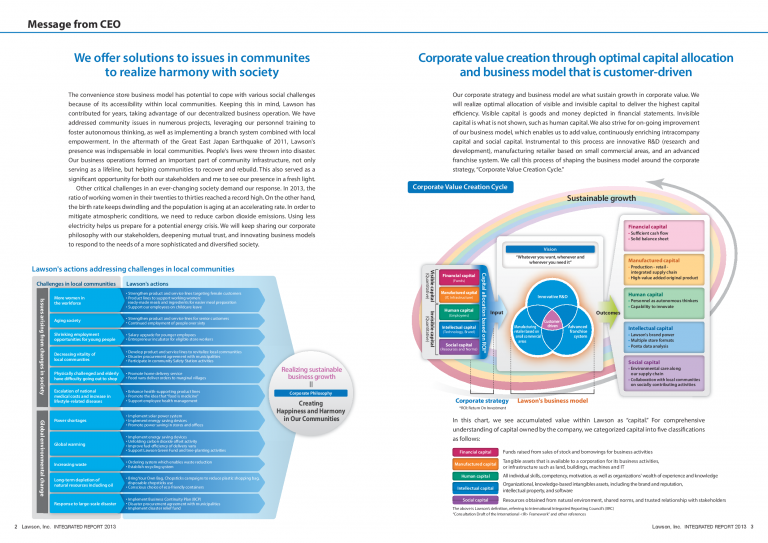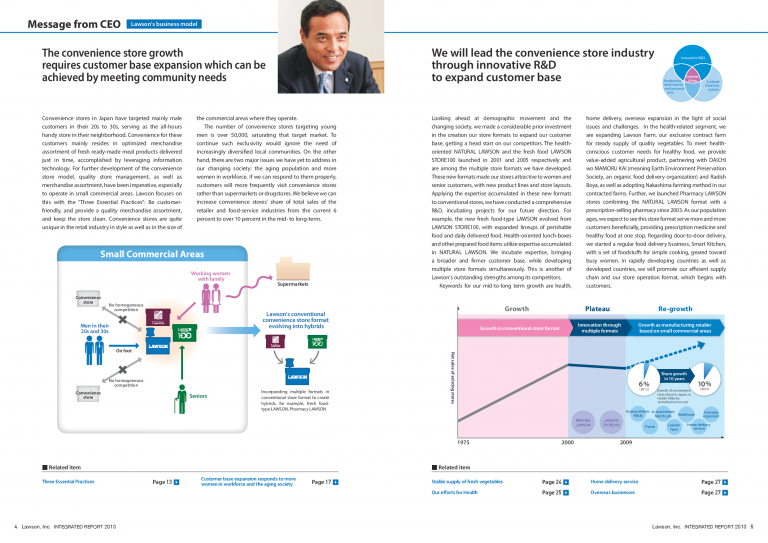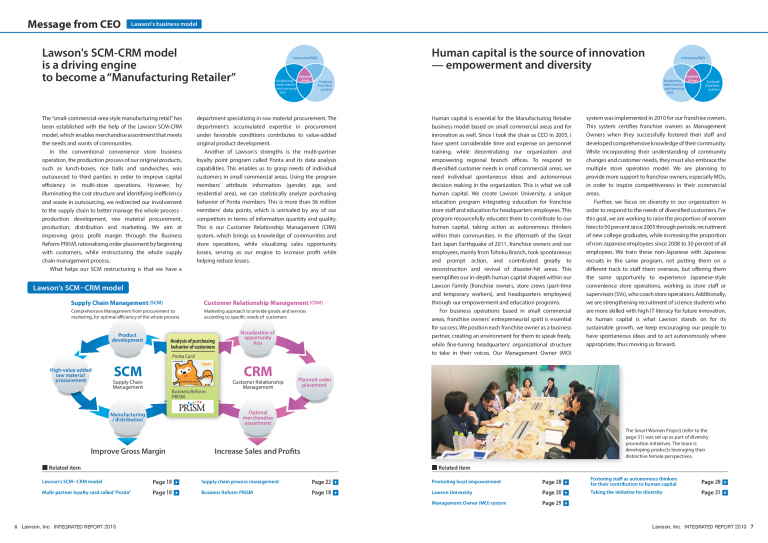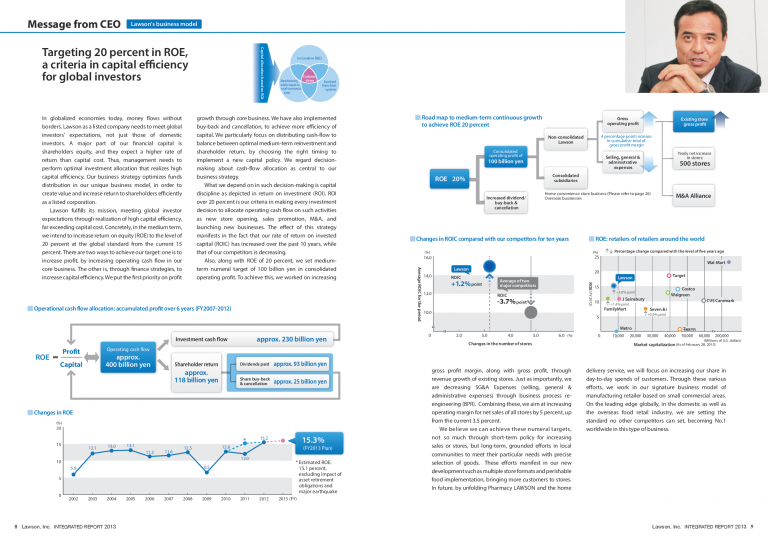Business model
- The capitals
- Value creation
- Conciseness
- Connectivity of information
- Stakeholder relationships
- Strategic focus and future orientation
Key observations:
Lawson introduces its business model in the “Message from CEO” section, as a basis for the discussion as to how to achieve management commitment of 20% ROE. The explanation of Lawson’s advantage is followed by an explanation of the wider societal challenges and environmental which the business is helping to address, thereby helping to provide some context as to the company’s wider purpose. This discussion is followed by the business model diagram (Corporate Value Creation Cycle). The company vision is based on the customer-driven corporate culture which is positioned as central to the business model, with the key input capitals – split between those which are qualitative and therefore invisible, and those which are visible and therefore quantitative – and outcomes. In the middle of the diagram are the three components which have been identified as differentiators and viable drivers of the business model.
Each of these three components are then explained in more detail in the following pages, demonstrating their interaction with each other which results in further enhancement of the Value Creation Cycle. The capitals shown in the diagram are further explained in the narrative which supplements the information in the business specific features and detailed technical aspects.
As Lawson’s operational format evolves with rapidly changing customer demand, the report captures both its short-term business actions and its long-term industry perceptions. Thus, this diagram not only explains how Lawson responds to today’s social challenges in the area that they operate in, but also provides insights to the potential evolution of its business model up to 2022.



